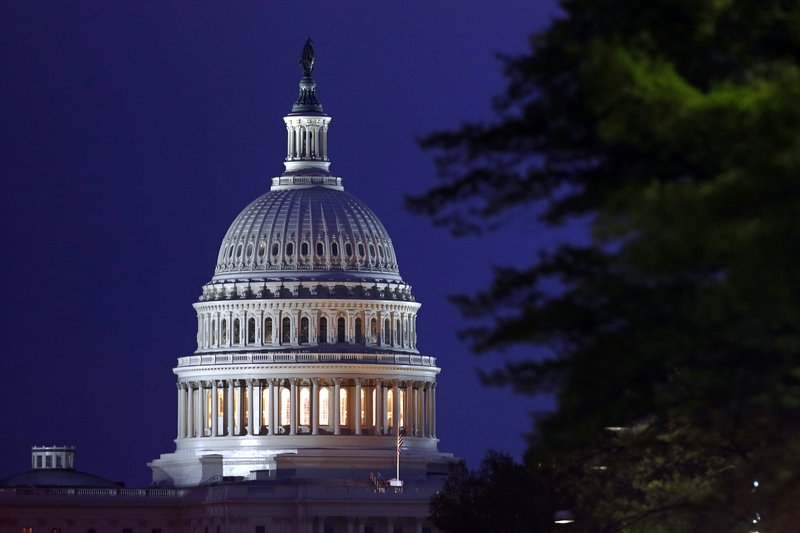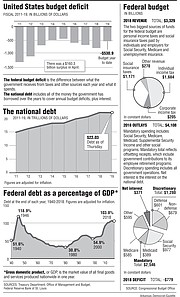WASHINGTON -- The federal government recorded a $160.3 billion budget surplus in April as revenue for the month jumped to an all-time high. But even with the flood of tax receipts, the federal deficit so far this year is running 37.7% higher than a year ago.
On Friday, the Treasury Department reported that the deficit for the first seven months of the budget year that began Oct. 1 totaled $530.9 billion, compared with a deficit of $385.5 billion for the same period a year ago.
President Donald Trump's administration projected in March that this year's deficit will hit $1.1 trillion, up from last year's deficit of $779 billion. The administration is projecting the deficit will stay above $1 trillion for four-straight years before starting to decline for the rest of the decade.
The deficits have increased since Congress, in December 2017, passed a $1.5 trillion tax cut promoted by Trump, which was followed by an increase last year in spending on domestic and military programs.
The Congressional Budget Office is projecting that the deficit in the current budget year, fiscal 2019, which ends Sept. 30, will climb to $896 billion, smaller than the administration's $1.1 trillion forecast but still 15% higher than last year.
The budget office's latest projection is indicating slightly smaller budget deficits in the short-term, projecting that they will remain below $1 trillion annually through 2021 but after that will top $1 trillion and will remain above the $1 trillion mark each year for the rest of the decade.
Accumulating deficits add to the overall federal debt, which totaled more than $22.03 trillion as of Thursday. That figure includes more than $5.6 trillion the government owes itself, including about $2.8 trillion borrowed from the Social Security Trust Fund, according to Treasury Department reports.
While the government runs deficits in most months, April has been a surplus month for 60 of the past 65 years, reflecting the flood of revenue that comes in with the annual deadline for people to pay tax bills.
This year's monthly surplus, however, was down from a $214.3 billion surplus in April 2018. That primarily reflected calendar quirks that had shifted $45 billion in benefit payments into March last year because April 1 fell on a weekend.
The April Treasury Department report showed that customs duties collected total $41 billion so far this year, up 82% from a year ago, a big increase that reflects the higher tariffs the Trump administration has imposed on China and other countries.
The duties on China increased again Friday with both sides unable to reach a deal to resolve a number of contentious trade issues.
So far this fiscal year, overall federal receipts are up 1.8% to $2 trillion while government spending is up 7.6% to $2.57 trillion.
One of the fastest-growing categories of spending is interest on the national debt, which totaled $226.3 billion so far this year, up 13.6% from a year ago.
A Section on 05/11/2019


